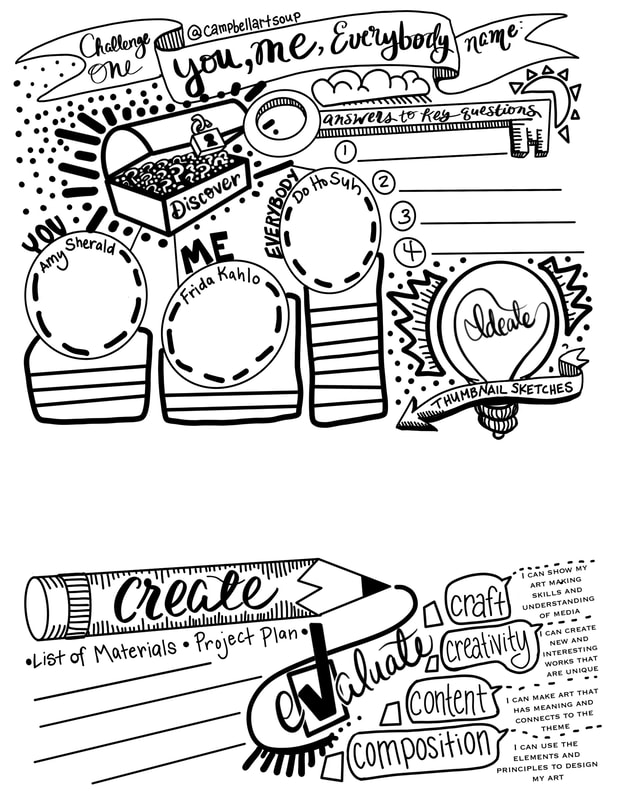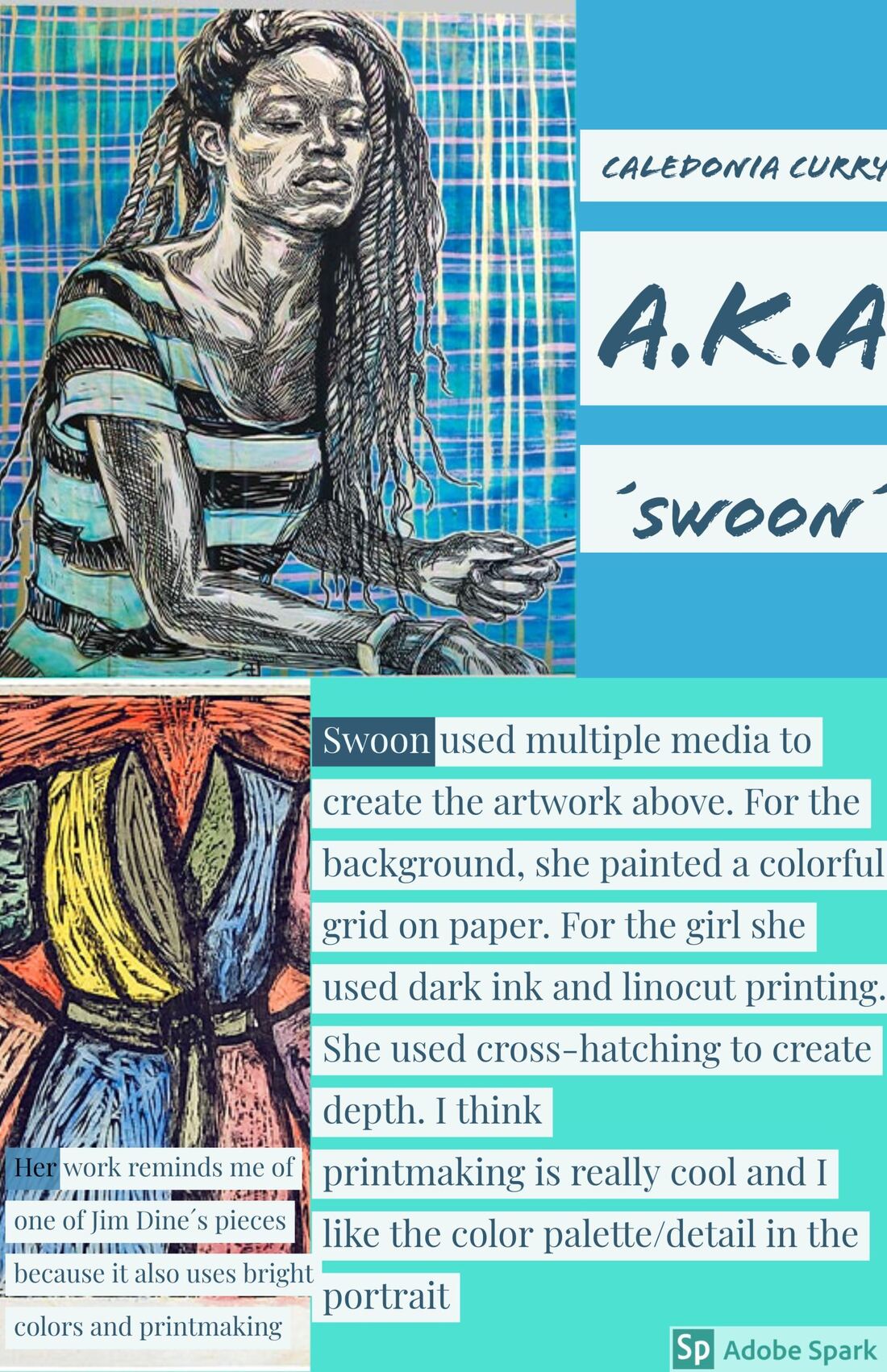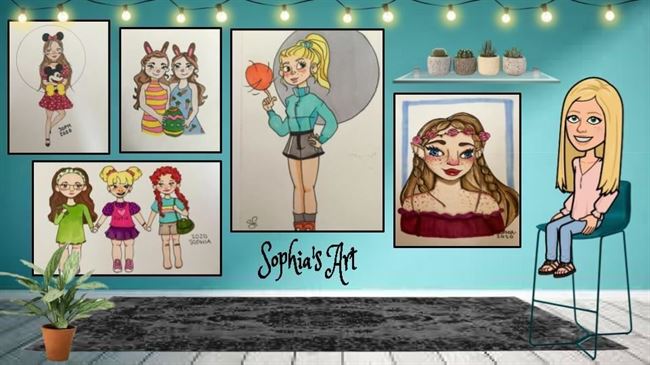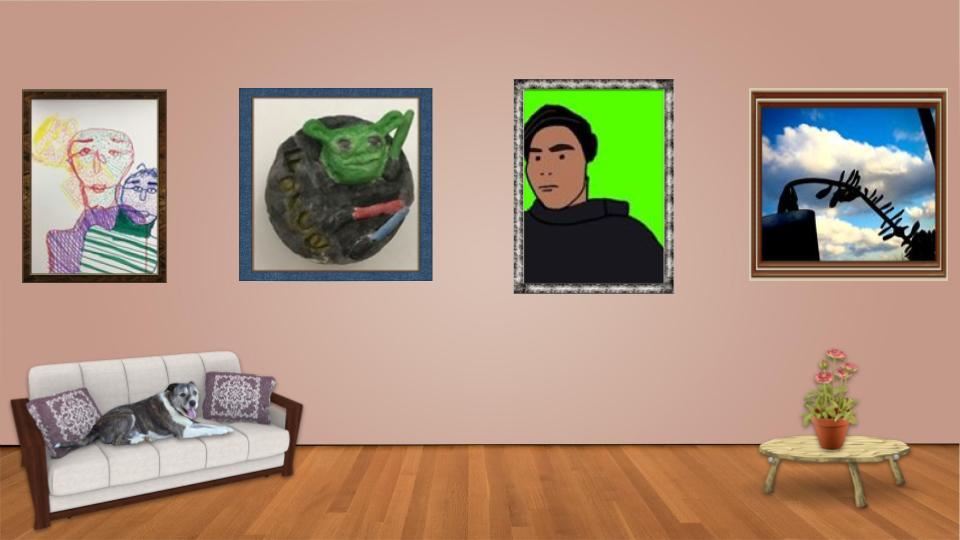I had a choice to make: completely overhaul everything and start anew or stay the course and keep moving forward using the processes, units, and activities I would have done if we had been face-to-face.
I chose the latter. I was lucky in that I had already had my students in the art classroom for about a marking period of time and they had taken STEM the semester before, so they understood the process from which we could follow to create the works we were going to make.
Design Thinking is something I have shared before and it has helped me shape my classroom into a place where students are able to make choices and stay organized and focused on results they are interested in obtaining. Finding ways I could adapt this process to teaching remotely was a challenge, but as you will view in the video, it was worth it.
Introducing Design Thinking to Students
By having a graphic to show go along with each step, it helps me better communicate to students the how of what we do when we try and solve visual problems. This can also be applied to other content areas (I see a lot of overlap with Science, for example) and it has been an awesome thing to share with my teaching partner in the STEM room so we can use common language about how we are going to help students walk through the work they do in our classes.
Organizing Thematic Units
Usually we have enough time during the semester to cover four unit themes. I use the same theme for both 7th and 8th grade, understanding that because students are getting to select what and how they make their art, the results are always going to be different and the units change year-to-year.
This year our themes were "You, Me, Everybody," "Spaces and Places," "Things You Leave Behind," and "Something Old, Something New." These themes allow me to cover some recurring subjects you will find in the work of artists like portraits, landscapes, and still life as well as focus on students demonstrating growth through a review of their Artsonia portfolio and reimagining what they had created before through the new lens of what they now know and can do.
Each theme has a set of artists we use as reference who come from different backgrounds and use different media to address the topic and students also have a series of skill builders and bootcamps they complete to get a better understanding of art concepts and media they can then select from as they complete their work.
By moving to a thematic structure that offers choice as a result of skill builders and mini lessons that give a variety of tools to use, students come up with dramatically different results that help them establish their own unique voice while also showing me they know and understand what is being examined through the process of creating the work.
Here are some examples of the planning sheets I use for the themes we covered and continued to cover, even when moving to remote learning:
Assessment for Learning
All of these components offer a chance to assess learning through lenses of what students were able to learn and retain through application, what students were able to produce and communicate through application, and how students felt about the learning, production, and application of the processes selected. I am still working how summative assessments, like quizzes the reviews were used to do in my face-to-face class, would work or look like when teaching remotely. Right now, I use the assessment feature on Schoology for this and hope to be able to adapt that to whatever our system looks like in the fall.
If you are interested in a closer look at the final exam review I offer for students, you can check out the file below:
| visualartsfinalexamreview__1_.pdf |
Looking Ahead
One way I envision myself organizing my online space is through the use of Google Slides and through the "Bitmoji Classroom." I also am really excited about SildesMania, where there are a lot templates that can be used for this and are offered for FREE!
I envision having something like the image you see above, which was created using Google Slides and allowing the images to be clickable that would then allow students to learn more about the unit.
I am also working towards more diverse representations of artists we use as reference in the art classroom. People from different backgrounds and countries should be represented. This is something that is really important to me because I am a child of an immigrant. As an Arab-American, I have grown up experiencing and continue to experience what it can feel like to be seen through a limited lens. I share this because it is important to seek understanding within ourselves and each other and grow in the process. Being mindful and purposeful of inclusion when seeking out which artists I teach will help me be a better teacher. And seeing art made from different points of view helps us understand the world in new ways.
I am excited and nervous about a new school year. There may be a lot of unknowns, but what I do know is I am so lucky to teach who I do and where I do and I cannot wait to get working with my students once we do start up this August!
















 RSS Feed
RSS Feed
